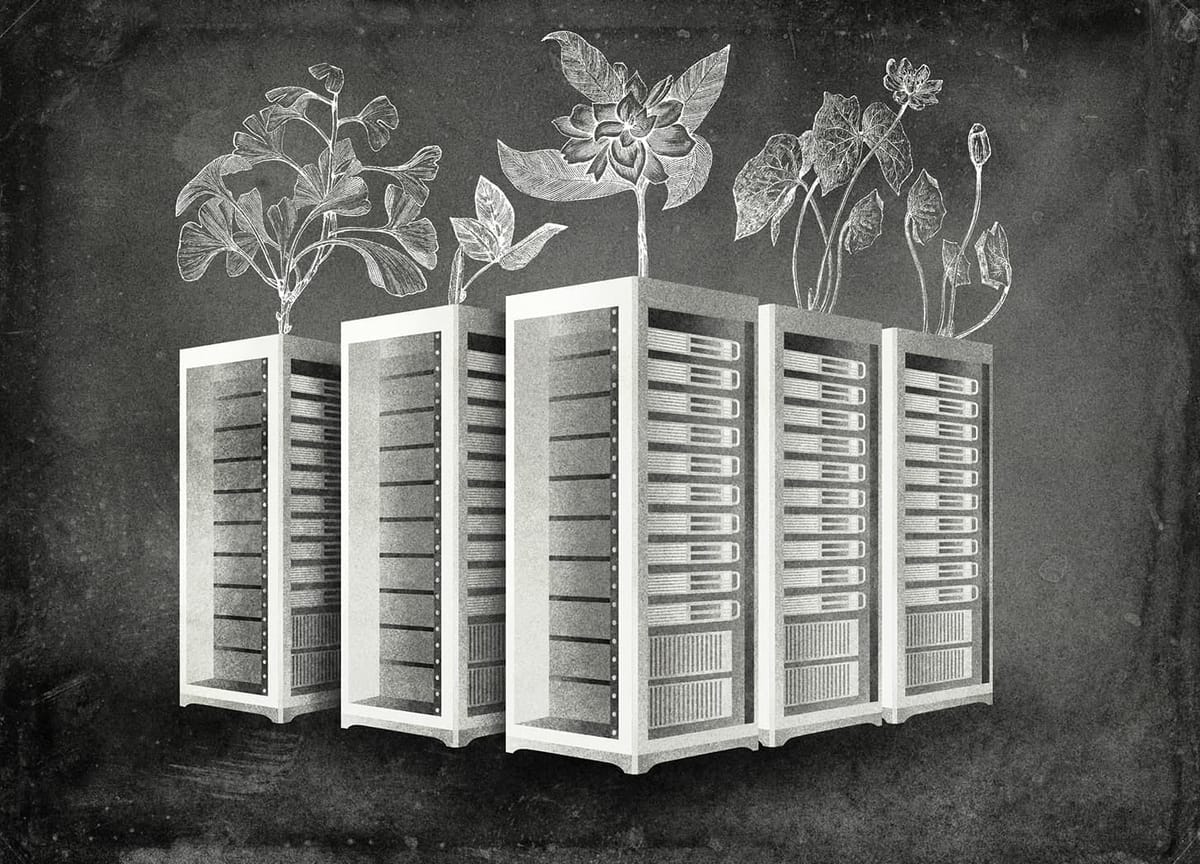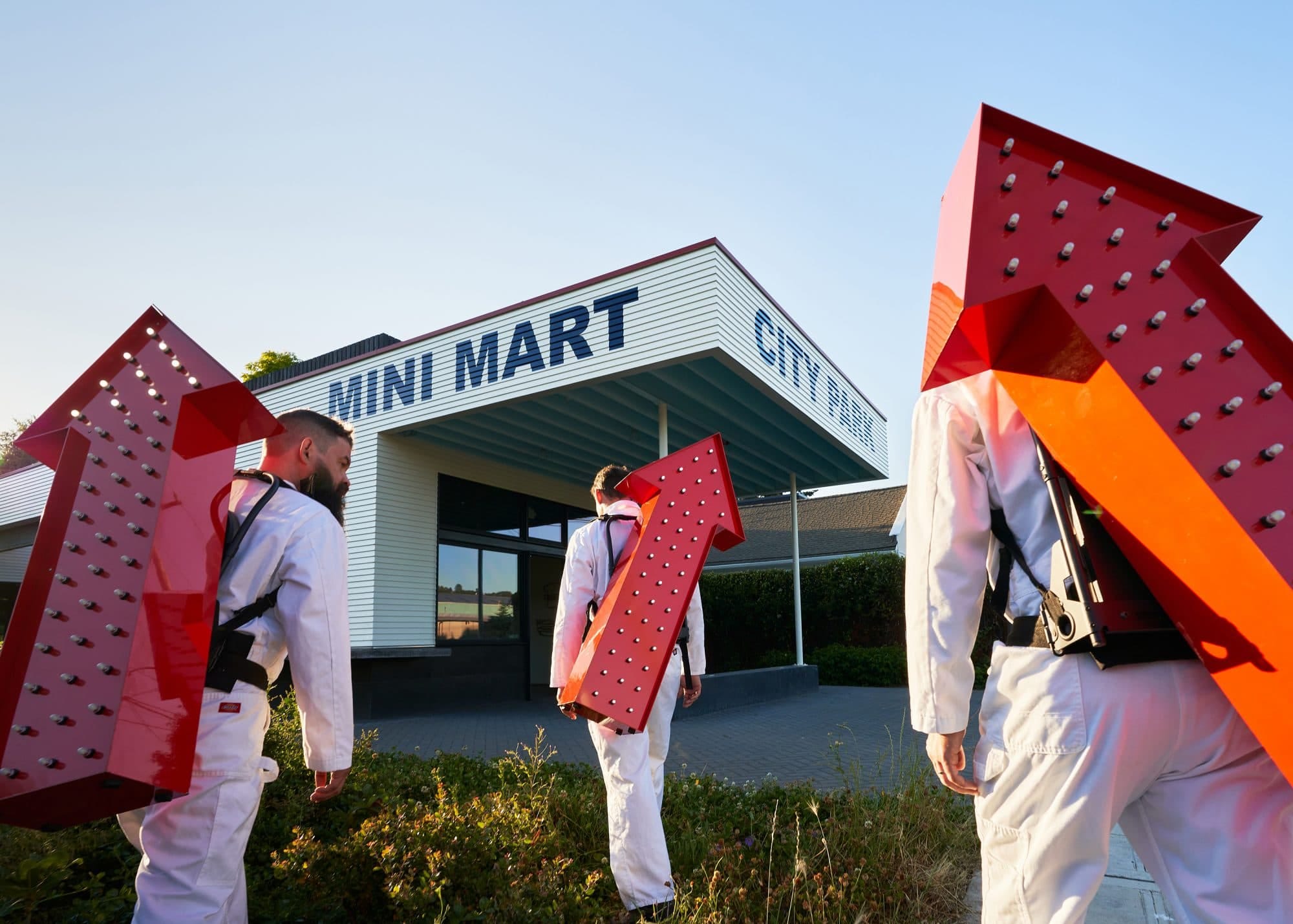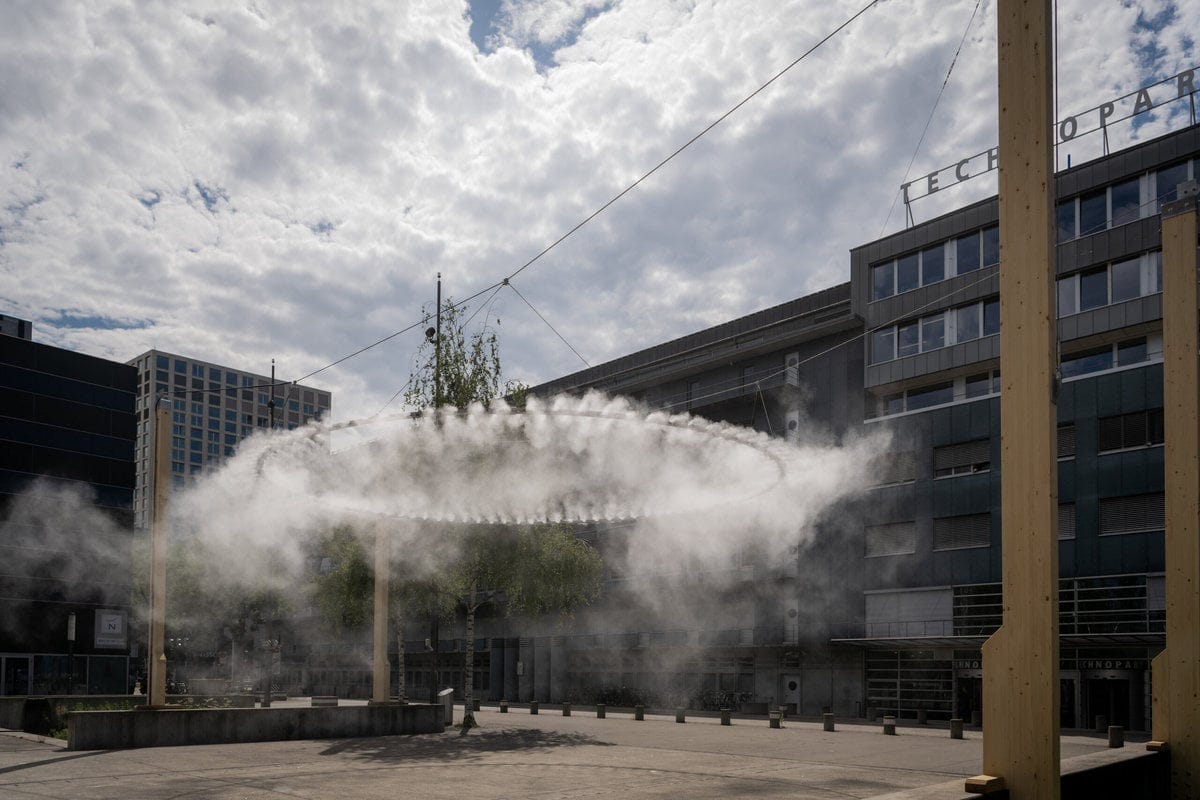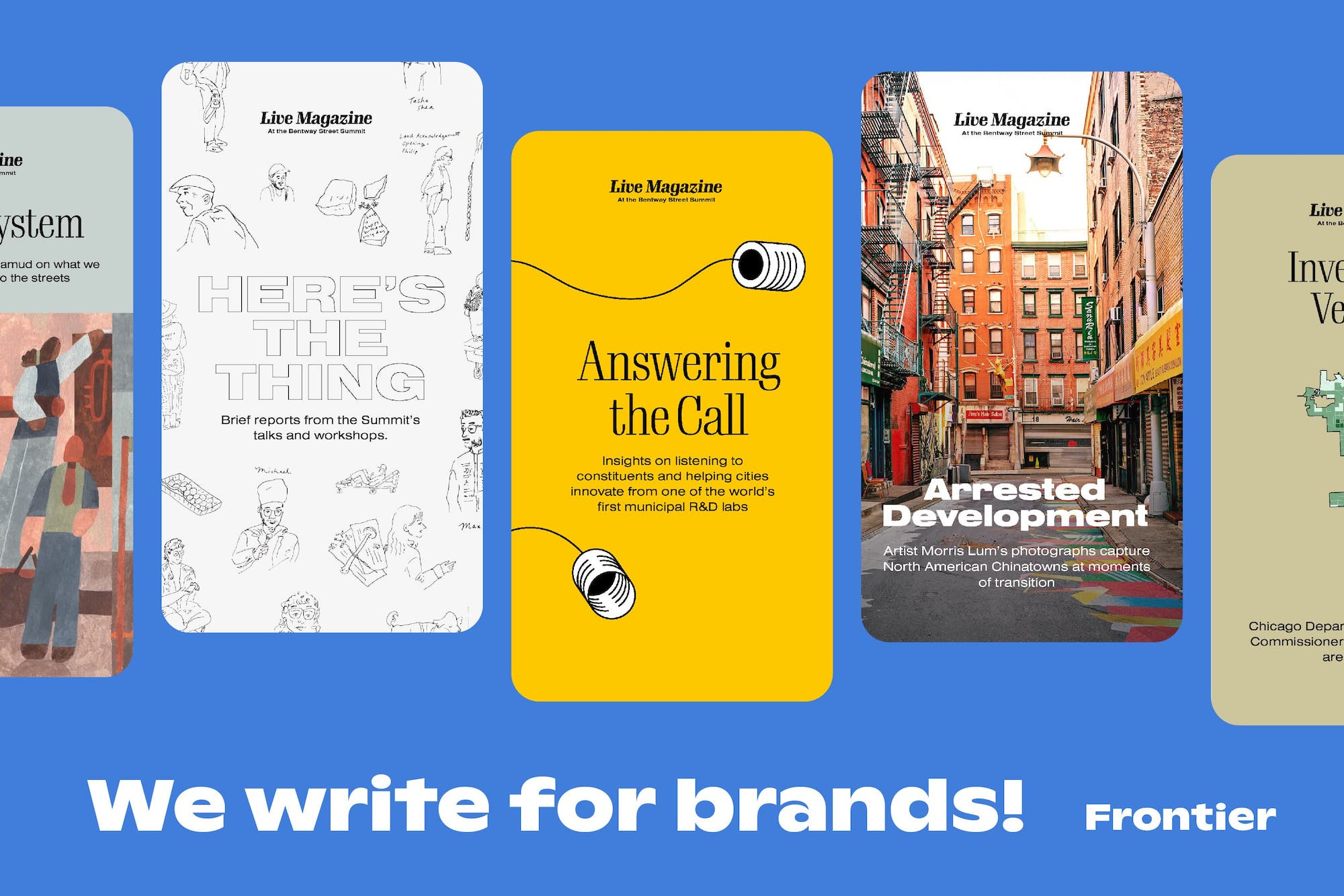Cool Runnings
“Our emails can feed chickens and grow lettuce!”

Hi everyone,
This week, three stories about design interventions that respond to troubled environments:
- In Seattle, an artist collective has created a multidisciplinary gallery that rehabilitates the polluted soil beneath it
- A researcher studying how data centers can mitigate the worst of their environmental excesses
- An experiment in Zürich to cool off a plaza covered in concrete
I’d love to hear about similar such experiments in the places this issue finds you! And scroll to the bottom for the universal nut sheller. As usual, I’m a reply away.
Love all ways,
Brian
Plot Twist

Last summer, a decade and a half after first leasing the property it sits on, the artist collective SuttonBeresCuller finally opened Mini Mart City Park, a multidisciplinary gallery and pocket park in Seattle. It took as long as it did primarily for environmental reasons. The plot of land, nestled between an airport and the Duwamish Waterway, was badly contaminated—not just with gasoline from the abandoned 1930s-era filling station on the site, but also with pesticides from a nearby nursery and other pollutants.
“At each point when we were feeling a little overwhelmed by the scope or scale of it, somebody or some organization came in and breathed new life into it,” John Sutton told the Seattle Times back in 2017. Partway through their work, Sutton, Ben Beres, and Zac Culler formed a nonprofit and bought the property. Unable to save the original building, they worked with GO’C, a local studio, to design a modern structure that honored the former station’s streamlined aesthetic, fit in to a landscape of low-slung industrial buildings and bungalows, and could host a wide range of artistic presentations.
Importantly, the project also actively repairs the land it sits on. During a 2022 walk-through of the space, the artists “opened the door to the mechanical room, revealing pumps and pipes—an air-sparge and soil vapor extraction remediation system—that chugged away, injecting oxygen deep below the surface and removing residual contaminants. Planning a continuing cleanup system into the structure was an innovative solution that allowed the project to move forward.”
I’m impressed by that creative ingenuity not least because I live half a block from the site of a former gas station that will soon be turned into a condo building. (It’s Toronto, after all.) As environmental assessors poke and prod the land, ascertaining how long it will take to remove pollutants before the construction work can begin in earnest, it seems there’s something to be learned about both tenacity and inventiveness in this small project on the other side of the continent. Emery Bayley, a brownfields manager with the South Seattle Coalition who advised the artists, said it well: they “took something with no value—a site full of junk—and turned it into a jewel, something of real value to the community.”
Cool Runnings

I first became interested in the material realities of data centers about a decade ago, when I idly wondered where all my files went as I put them in “the cloud.” That led me to writers like Ingrid Burrington, author of Networks of New York (buy in the US or CA) and the writer who revealed to me the fascinating link between data-center locations and old railroad infrastructure.
So, a year ago, when the Harvard Graduate School of Design announced Marina Otero Verzier as the 2022 winner of its Wheelwright Prize, my ears perked up at the title of her project: “Future Storage: Architectures to Host the Metaverse.” She’s given several interviews since, but a new conversation prompts me to share because it contains examples of creative approaches to sustainability in data-center design.
In particular, I’m fascinated by the Infrastructure and Cloud Research & Test Environment in Luleå, Sweden, which recovers the excess heat generated by always-on computers to grow mealworms and plants. Or, as Otero Verzier puts it: “Our emails can feed chickens and grow lettuce!”
Her other examples are more firmly within the realm of today’s sustainable-architecture discourse: powered by wind and water; built with a mass-timber frame; sharing excess energy back with the local power grid. Nonetheless, given that raw computing power is what’s behind the AI craze, these kinds of forward-looking sustainability projects are all the more necessary. Google, for example, can’t seem to get its data-center water usage under control; the 5.6 billion gallons it consumed in 2022 is 20% more than what it used the year before.
See here for another researcher’s take on “the climate cost of the AI revolution.” Given that the percentage of global carbon emissions attributable to our digital lives is increasing dramatically, the next question I’m beginning to wonder about: what does frugal computing look like?
Droplet Cause It’s Hot

Climate researchers describe cities as “urban heat islands” where the temperature is often noticeably warmer than in less densely populated areas. This is due largely to land cover: materials like concrete and asphalt, which trap heat, and the waste heat generated by our cooling systems.
A few weeks back, I wrote about two promising research projects that combat this effect with super-reflective white materials. People passing through Zürich’s Turbinenplatz this summer will encounter another experiment in creative heat reduction: Alto Zürrus, a suspended aluminum ring with 180 high-pressure nozzles that release extremely fine water droplets. As researchers affiliated with the project put it:
The concept behind the cloud is basic thermodynamics: water evaporates and extracts heat from its environment, which has a cooling effect on the surrounding air. The tiny droplets generated by special nozzles enhance this effect, due to the increased surface area of the water and the resulting rapid evaporation. As the ring is installed a few meters above ground, most of the water has evaporated before it reaches passersby, while the air, which is now cooler and thus denser than the surrounding air, will sink towards the ground. Thus, in principle, you can walk by and enjoy a refreshing breeze, without your clothes (or mobile device) getting wet.
Designs like this are meant to complement the planting of trees and other medium- and long-term climate-mitigation strategies. This pilot project wraps up next autumn, at which point they’ll know more if the hoped-for temperature changes occurred and whether the effect was worth the cost—both financially and in terms of water consumption. No matter the results, I’m confident that such small-scale interventions, often at the municipal rather than the state or federal level, will bring about real advances, and I’ll keep looking out for them.
(Seeing the picture above, I also couldn’t help but make aesthetic connections: Alto Zürrus looks to me as if Diller Scofidio + Renfro’s Blur Building, for the 2002 Swiss Expo, mated with CCxA’s The Ring, unveiled last year in Montreal.)
🔗 Good links
- 🎨 GQ interview with Brooklyn-based painter Mathew Cerletty, whose next exhibition is at Standard (Oslo)
- ⏲️ “Writing happens when it happens, just like temper tantrums and sleepless nights.” Prudence Pfeiffer on writing, feminism, motherhood, and the extraordinary artists in her book The Slip
- 🌍 “Solving for the climate crisis and the accompanying biodiversity crisis can and should go hand in hand.” –Architect Sierra Bainbridge
- 🇹🇷 Kinetic, four-minute stop-motion animation showing design patterns from several cultures seen in Istanbul
- 🥜 A random stroll through Wikipedia this week brought me to this inspiring, low-cost, surprisingly effective design: the universal nut sheller.

Frontier Design, the studio behind Frontier Magazine, provides editorial services for organizations looking to amplify their stories. We write, edit, and produce content strategies for websites, books, launch videos, campaigns, annual reports, and more. Reply to this email to learn how we can help you.





